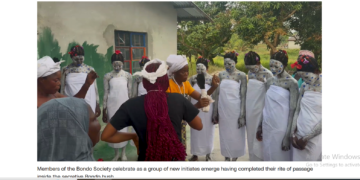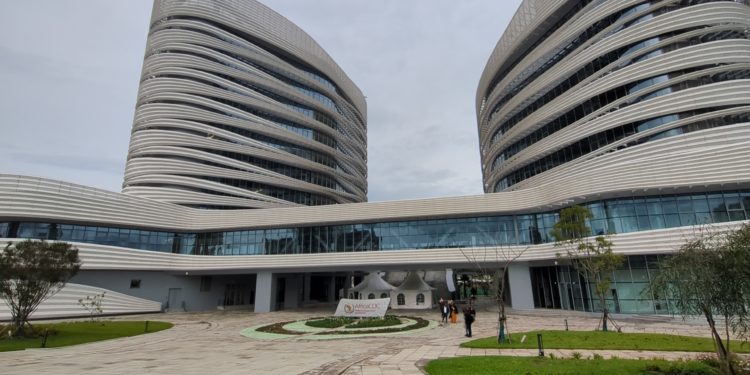By Kemo Cham
Latest Africa CDC data on the ongoing Mpox response indicates a mixed picture across the continent, as some countries see declining cases while others experience a resurgence.
The continental public health agency says while hotspot countries like Sierra Leone and the Democratic Republic of Congo have realised a continued decline in cases in the last few weeks, others are experiencing resurgence or increase in new cases. Among these are Sierra Leone’s neighbours Liberia and Guinea. A total of 12 countries that also include Ghana, Nigeria, Kenya and Zambia fall within the group that are said to be realising “concerning upsurge and resurgences.”
Prof. Yap Boum II, Deputy Manager of Africa CDC’s Incident Management Support Team (IMST), said the situation called for accelerated levels of surveillance in affected countries.
“This is really the time where we can push in terms of community based surveillance and identify the cases, but also implement the right IPC method,” Prof. Yap told reporters on Thursday during the agency’s weekly press briefing on Mpox and other public health emergencies.
Sierra Leone remains among the top four countries that lead the trend of infections on the continent, alongside DRC (the epicentre of the continental emergency), Uganda and Burundi. In the last one week (Epidemiological Week 27), Sierra Leone, Uganda and DRC, ranked top three, contributed 74 percent of the cases and 78 percent of the deaths on the continent. But this, according to the data, represents a progressive decline.
As of June 15th, the continent recorded 2,594 suspected cases, compared to the previous week when 2,765 suspected cases were registered, representing 6 percent decline in suspected cases. The same period saw a 13 percent decline in confirmed cases from 749 to 651 cases.
Africa CDC warns that while this decline highlights improved surveillance, it also serves as a reminder for the need to accelerate measures that occasioned the gains.
Mpox, previously known as monkeypox, is a virus that causes fevers, headaches, and painful boils on the skin. It can spread from infected animals to humans, and from person to person through close physical contact, including sexual intercourse.
The current epidemic in Africa, which comprises multiple outbreaks, have affected a total of 27 countries since the beginning of 2024, with 159,196 suspected cases and 46,486 confirmed cases. Within this same period, the continent has witnessed 1,879 suspected deaths and 216 among confirmed Mpox cases. The fatalities were recorded in eight countries, including Sierra Leone.
Eight member states have put the virus under control.
The high number of suspected cases indicate the possibility that other sicknesses with similar symptoms as Mpox are involved, especially Measles, which is endemic in some of these countries and which, as the data shows, is killing more than Mpox. And according to Prof. Yap, this justifies Africa CDC’s call for countries to integrate their response to all diseases.
Sierra Leone recorded its first case of Mpox on January 10th, 2025. It was the last in the Mano River Union (MRU) to record a case in the epidemic. However, within three months, Sierra Leone saw cases rose exponentially. In the last two months, the country led the trend of increase in cases on the continent. Data from the National Public Health Agency (NPHA) shows that Sierra Leone has recorded a total of 4,810 confirmed cases and 37 deaths as of Thursday, July 17th.
The NPHA has intensified its response through increased surveillance and contact tracing, with the support of partners like the Africa CDC, WHO and Unicef.
The decline in cases seen in the latest data, in both suspected and confirmed cases, is backed by a decline in the test positivity rate at 60 percent, according to the Africa CDC data.
“This means that the enhanced integrated surveillance, IPC and community engagement efforts are bearing fruits,” said Prof. Yap.
But the situation across the border in Guinea and Liberia poses a threat to the gains seen in Sierra Leone. The concern is highest for Guinea, where cases have been escalating recently, with the epidemic concentrated in the capital, Conakry and the western region of Kindia, which shares border with both Sierra Leone and Liberia.
Guinea recorded its first case in September 2024. As of July 15th, it had recorded 87 cumulative confirmed cases. But Africa CDC warns that passive surveillance means that many cases might have been missed.
Isolation is one key method to put Mpox under control. But in Guinea, people who tested positive for the virus reportedly refused to isolate and opt to taking treatment from home.
“Rising test positivity suggests testing is based on passive surveillance, likely missing silent community transmission,” the agency says.






















